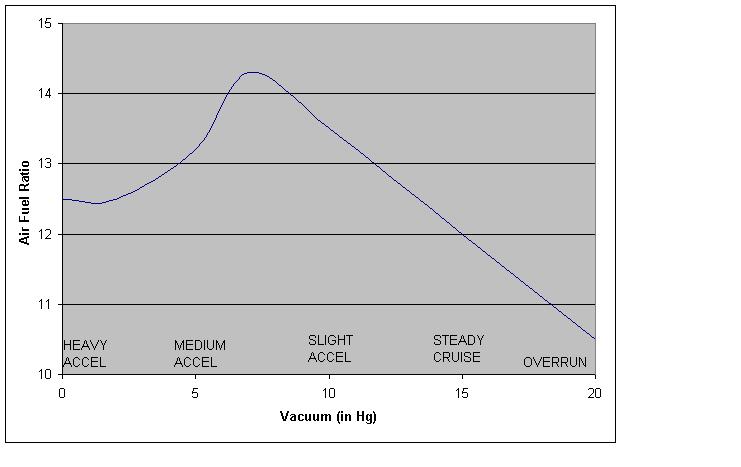I've recently gone down the rabbit hole of D-Jet and MPS tuning and wanted to post what I've learned in the hopes that it may help others. I also hope to start a discussion with some of the experts here in case I've missed something, or there are errors in my analysis.
Background:
With the increased displacement (2056cc) and non-stock cam (Webcam 73) in my engine, I was experiencing Air-Fuel Mixture (AFR) issues across the range of temperature, load, and rpm conditions.
This post concerns MPS tuning. At the moment, I'm also working on modifying component values inside the ECU to change the Volumetric Efficiency curve to better match the non-stock AFR vs RPM characteristics of my engine. If there is any interest in poking around that deep in the bowels of D-Jet, I'll start a thread when I finish.
Engine Configuration:
'73 2.0
Displacement: 2056cc
Cam: Webcam 73
ECU: Porsche nnn906021E (Bosch 280000037)
MPS: Porsche 022906051E (Bosch 0280100049) w/ Tangerine Racing tuning kit + spacer ring; tuned to emulate 0280100037
CHT: 0280130017 w/ 270-ohm ballast resistor and steel spacer
Vacuum Hoses routed per @JeffBowlsby (see link below)
Fuel Pressure: 35 psi (at the moment -- still tuning)
PCV: Modern PCV valve routed to plenum
Ignition: 123Ignition PORSCHE-4-R-V-IE, running profile "1" w/ Vac Advance
Timing: 27 degrees at 3500 rpm (w/o vacuum adv/ret)
Equipment used:
Generic handheld vacuum pump/gauge
misc hoses+fittings
AMPROBE LCR55A meter (on 20H scale)
Innovate Motorsports (3837) LM-2 (BASIC) Digital Air/Fuel Ratio Wideband Meter w/ Bosch LSU 4.9
Home-fabricated tailpipe "Stinger" w/ O2 Sensor Bung TIG welded on
Reference Info:
Vacuum Hose Routing
MPS Theory of Operation @pbanders
AFR vs Manifold Vacuum Issue @Demick
Analysis:
Click to view attachment
As you can see in the "Chart A" sketch above, the MPS Inner Screw (in isolation), Outer Screw+Inner Screw (together), and Stop Plug Screw can be used to tune the MPS's affect on the AFR (via its effect on the Fuel Injection pulse width) vs Manifold Vacuum. As shown, the Inner Screw affects the mixture over the whole vacuum range; the Inner+Outer Screw controls the onset pressure P' where the diaphragm begins to lift off the part-load stop; the Stop Plug Screw controls the final pressure P'' where the diaphragm comes to rest on the full-load stop. On this chart, "up" corresponds to a longer FI pulse; "down" to a shorter FI pulse. For details, see pbanders's excellent link, above.
I had previously thought that the effect of the Inner Screw was similar to that of changing the fuel pressure via the fuel pressure regulator. Namely:
Inner Screw CCW = Increase Fuel Pressure => Richer AFR across entire vacuum range
Inner Screw CW = Decrease Fuel Pressure => Leaner AFR across entire vacuum range
There appeared to be no way to change the slope of the MPS Response curve in the region from 15 In-Hg to P'. And, I was experiencing the same problem that Demick posted about years ago in the thread linked above. Namely, the AFR would become too lean under moderate-load conditions across all RPM's, like this (from Demick's post):

To fix the lean condition around 6-8 In-Hg, it's really necessary to change the slope of the MPS response curve, not just raise or lower the whole curve.
However, there appears to be hope. It seems that the MPS inductance is not simply linear WRT manifold pressure in the 15 In-Hg to P' region. I speculate that this may be due to non-linearity in the MPS Inductance across its range of movement and/or the effect of the MPS spring. The result is that the curve seems to look more like the "Chart B" sketch above. And, the effect of turning the MPS inner screw isn't really raising or lower the entire curve, but rather shifting the Chart B curve left/right. (Chart B is a really rough sketch, and may even have the convexity backwards. For a more quantitative look, see below.)
I measured the inductance of my MPS at two different inner-screw settings: The red curve is the MPS tuned to pbanders's values corrected for 700 Torr ambient pressure. The blue curve represents an attempt to richen the AFR by turning the inner screw CCW.
Click to view attachment
As you can see, the slope of the red curve is steeper than the blue curve in this region. Apparently, turning the inner screw CCW has the effect of reducing the slope by raising the right end, rather than raising the whole curve.
I'm surprised that the curves cross around 7 In-Hg and that the blue curve value is less than the red curve value at the left side of the chart. This may be due to the effect of the part-load stop coming into play near P', measurement error, or something else.
The salient point, however, is that adjusting the inner screw affects the slope of the curve, whereas presumably adjusting the fuel pressure does not.
The opens the possibility of tuning the AFR vs Manifold pressure curve by trading off fuel pressure vs inner screw position:
Increase Fuel Pressure + Turn Inner Screw CW => Enrich 6-8 In-Hg region
Decrease Fuel Pressure + Turn Inner Screw CCW = Lean out 6-8 In-Hg region
I experienced the same problem that Demick did (too lean at 6-8 In-Hg across all RPM), and have largely solved the problem by adjusting the fuel pressure up (to 35 psi currently), then tuning the MPS to set the AFR across the entire range of manifold vacuum levels.
I hope this is helpful to somebody. Comments are welcome. If I've made any errors, please feel free to beat me over the head.
Cheers.
